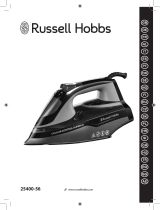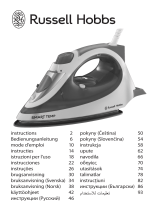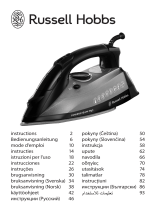
- This appliance can be used by children aged 8 or above and by
persons with reduced physical, sensory or mental capabilities or lack of
experience and knowledge if they have been given instructions in safe
use of the appliance and supervision to establish safe use and if they
have been made aware of the hazards involved.
- Do not allow children to play with the appliance.
- Keep the iron, the stand and the mains cord out of reach of children
aged 8 years or below when the appliance is hot, when it is plugged in
and when the appliance is cooling down after it has been unplugged.
- Children aged 8 or above are only allowed to clean the appliance and
perform the Calc-Clean procedure under supervision.
- Do not let the mains cord come into contact with the hot soleplate of
the iron.
- Only use the iron with the stand supplied.
Caution
- Only connect the appliance to an earthed wall socket.
- Check the mains cord regularly for possible damage.
- The soleplate of the iron can become extremely hot and may cause
burns if touched.
- When you have nished ironing, before you clean the appliance, before
you ll or empty the water tank and also when you leave the iron even
for a short while: set the steam control to the ‘no steam’ position, put
the iron on its stand and remove the mains plug from the wall socket.
- Always place and use the iron and its stand on a stable, level and
horizontal surface.
- Do not put perfume, vinegar, starch, descaling agents, ironing aids or
other chemicals in the water tank.
- This appliance is intended for household use only.
This Philips appliance complies with all standards regarding electromagnetic
elds (EMF). If handled properly and according to the instructions in this
user manual, the appliance is safe to use based on scientic evidence
available today.
1 GC4820 only: Press the carry case release button.
ENGLISH 7




















